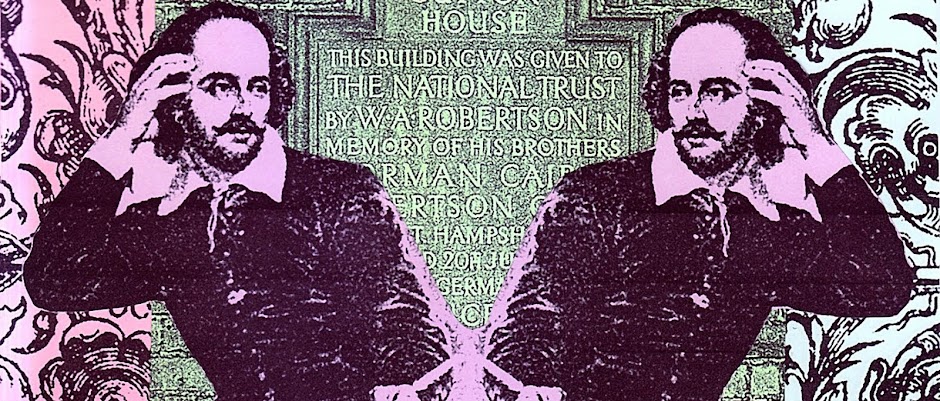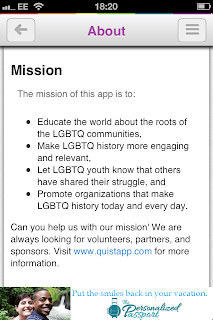
I am astounded by the vocal opposition to the National Trust’s collaboration with the Big Brother house that comes not only from the usual offenders such as the Daily Mail and the Telegraph, but also from some waspish Guardian readers: ‘even the National Trust is at the vanguard of dumbed-down Britain these days’, ‘They [the National Trust] will not be getting any more of my money’ and so on. Ann Widdecombe, who has in the past been critical of the National Trust’s attempts to widen its appeal and the definition of heritage (in particular the award winning Soho Stories app “I fail to understand how getting young people to listen to these stories of Soho relates in any way to the important and historic work of the National Trust”), has been equally vocal about the Big Brother House, stating that the house is emblematic of a "tawdry and celebrity-obsessed" society. Ironic really for someone who has made a post-politics career from the likes of Celebrity Fit Club, Strictly Come Dancing and Have I Got News For You.
I’m not suggesting for a second that everyone needs to like, or appreciate Big Brother, I know many people who have good reason for disliking the show. My problem is with people objecting the National Trust giving tours of the house for two days. The expansion of approaches to new heritage does not mean the neglect of traditional heritage; a more inclusive sense of heritage excludes no one. If you’re not a Big Brother fan, I expect you probably didn’t fork out for a ticket to attend a tour. There is no obligation, as a National Trust member, to attend all of the sites they either own, or take over for short term projects, I daresay most members have only ever seen a tiny proportion of the vast wealth of properties belonging to the National Trust. If your instinct at hearing about the Big Brother collaboration is to shred your membership, then your notion of heritage needs reconsidering.
What the objections boil down to, is cultural snobbery. We live in a world where people still consider there to be a difference between “high” culture, or “high” art and popular culture/art. I don’t believe such a distinction exists. John Carey, in his brilliant book
What good are the arts? argues much more eloquently than I ever could that there are no rational grounds for assuming a difference between the two (see the chapter called ‘Is ‘high’ art superior?’). The assumption of “high” art is that enlightenment comes from engaging with art work and culture that is approved by those above us, the highly educated, the pre-approved “real” artists. This is the realm of canons and hierarchies that presume a particular uniform standard of what can be considered good. This has massive implications around class, Carey notes ‘high art is exclusive, popular art is receptive and accessible, not aimed at an educated minority’. Criticisms of popular art is that it is purely escapism, and formulaic. Escapism is no bad thing, and to dismiss popular art as mass produced or formulaic is to overlook the ‘established genres and rules of composition’ found in much “high” art, such as impressionism. If we were trying to establish how long it takes something considered trashy, throwaway, popular and mass produced to shift into the space of “high” or “real” art, I suspect Andy Warhol would be a good place to start.
I am, and always have been, a massive National Trust fan. I currently volunteer at Sutton House in Hackney, and have many favourite sites around the UK, including Cragside (Northumberland), Gibside (Tyne and Wear) and Kingston Lacey (Dorset). Growing up in the North East, there weren’t many others in my classes at school who would spend their weekends exploring historic houses and crumbling ruins, my family’s National Trust membership was a notable middle class luxury. The engagement with newer interpretations of heritage have largely been framed in the attempt to attract a younger audience to the National Trust, but my instincts tell me that it’s not an age barrier that the Trust needs to overcome, but a class barrier. Many of the people I met on the tours were not National Trust members, but were interested in hearing about some of the sites I’ve previously mentioned, and were keen to visit in the future. Why? Not because they aren’t “enlightened” enough to have engaged with historic sites before, but because the recent initiative at the National Trust said, quite loudly, ‘we are for you too’. The visitors ranged vastly in age, the youngest in my tours was 16, but I saw many younger children in other groups, and the oldest were elderly people, many of whom were Big Brother fans
as well as long-time National Trust members.
I was honoured to be able to be involved in this project, I assisted at the launch party and gave tours on the Friday. The National Trust team were brilliant, Joe, Chloe, Mark and many others, as were the Big Brother team, including one of the voices of Big Brother and producer Lauren. This collaborative effort between Elstree Studios, the Big Brother Team and National Trust staff and volunteers was inspirational and a near-military operation, such was the scale of the visitors in such a short space of time. The visitors who took the tour were delightful to spend time with, enthusiastic about the show, enthusiastic about the opportunity to be a part of history, and to interact with a set that many felt they already intimately knew. The tour went through the camera runs around the house, giving a rare opportunity to see the house through the eyes of the camera men and women and the production staff, before entering the house itself, where each visitor was beckoned to the diary room by the ominous voice of Big Brother, where they could have a photograph in the historic chair. There was also the opportunity to meet ex-housemate, the lovely Jackie Travers, who could speak from much more experience about the house than I, or the other tour guides, ever could. The tour then moved to the gallery to see how the programmes are edited, and the booth where Big Brother sits to communicate with the housemates. It ended in the Big Brother Bit on the Side studio.

We were prompted, in our guide notes, to anticipate any objections to the National Trust’s involvement, but I eschewed this defensiveness unless prompted. Unsurprisingly, the few visitors who raised the controversy shared my views of ‘a lot of fuss over nothing’ and felt that it was a promising and exciting opportunity that they hoped was only the beginning.
One of my favourite moments was speaking to a 16 year old boy who had come with his older sister. He was a Big Brother super fan, and had more to tell me that I could ever tell him about the show. He was itching to get to each new room and when the tour came to an end he did not want to leave. Most movingly, he was telling me that he had heard that two ex housemates, both male, were now apparently an item. He said this without judgement at all, in a way that 16 year old boys when I was that age would never have done. This reminded me that above all else, Big Brother has been a great judgement-free platform for marginalised people, presenting honest and objective insights into the lives of people that are usually framed within sensationalist documentaries or scathing tabloid articles. Of the 14 classic series of Big Brother, we have seen two transgender winners, and two winners with disabilities. The Big Brother series has been a great platform for LGBT people and women too.
Big Brother tells us as much about our society (however you feel about it) as Sutton House in Hackney tells us about Tudor times. If these stories can be shared in a tongue-in-cheek and exciting way, all the better. The Big Brother house is Orwellian, it’s Warholian, it’s the photographs of Dianne Arbus brought to life. And just as importantly, it’s bloody brilliant viewing and has changed the face of television. I’m pleased that this has stirred up debate, but if the debate never moves beyond straight forward snobbery, then I don’t think it is worth pandering to the critics. Ivo Dawnay, the London Director for the National Trust said that the housemates from Big Brother were the aristocracy of today, while tongue in cheek, I think there is some truth in this. These are people who are no more or less important than anyone else, but whose lives become of great interest to the general public. I hope this is the beginning of a really radical time for the National Trust, where the definition of heritage continues to be challenged, refreshed and revisited. Keep your eyes out for future events taking place through
Project London.
This has definitely been the most interesting and exciting project I've been involved with in my short heritage career, so I’ll end with a few fan-boy pictures from my (very surreal!) time in the house. (top to bottom, Jackie Travers who helped with the tours, me and Lauren Harries' lightbox in the living room, me and fellow Northerner and National Trust fan- the very handsome Liam McGough, me and Lauren Harries who was just as lovely as I expected her to be).































